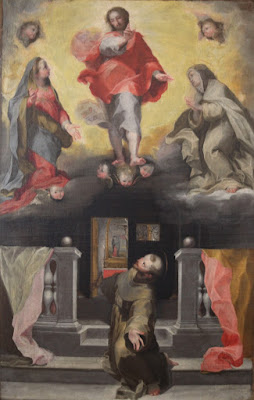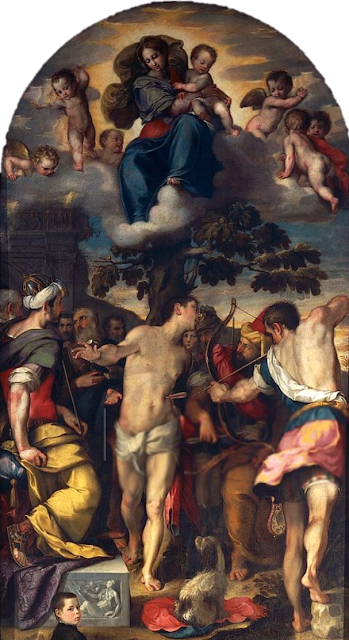 |
| Federico Barocci Study for a Portrait of Lavinia della Rovere ca. 1565 oil on canvas private collection |
 |
| Federico Barocci Portrait of Francesco Maria II della Rovere 1572 oil on canvas Galleria degli Uffizi, Florence |
 |
| Federico Barocci Portrait of Francesco Maria II della Rovere (detail) 1572 oil on canvas Galleria degli Uffizi, Florence |
 |
| Federico Barocci Portrait of a Young Lady ca. 1600 oil on canvas Statens Museum for Kunst, Copenhagen |
 |
| Federico Barocci Portrait of a Young Man ca. 1580-90 oil on canvas Musée des Beaux-Arts de Strasbourg |
 |
| Federico Barocci God the Father before 1612 oil on canvas Galleria Nazionale delle Marche, Urbino |
 |
| Federico Barocci Head of Christ in the Tomb ca. 1600 oil on canvas Bonnefantenmuseum, Maastricht |
 |
| Federico Barocci Il Perdono di Assisi (plenary indulgence instituted under St Francis) ca. 1575 oil on panel (altarpiece) Galleria Nazionale delle Marche, Urbino |
 |
| Federico Barocci Il Perdono di Assisi 1581 etching and engraving National Gallery of Art, Washington DC |
 |
| Federico Barocci The Last Supper ca. 1590-1600 oil on canvas Cattedrale di Santa Maria Assunta, Urbino |
 |
| Federico Barocci Martyrdom of St Sebastian 1557 oil on canvas (altarpiece) Cattedrale di Santa Maria Assunta, Urbino |
"A painting by Barocci, the Martyrdom of St Sebastian (Urbino, Duomo), done in 1557 (when he was about twenty-two) reveals the formidable intelligence of mind and hand which, apparently during that very early year, he had learned to control exactly. It also shows the measure of his power to fuse into a personal consistency the elements of a visual culture of an unusually diverse kind. Barocci has exploited the environmental accident that put him in a place where Central Italy, Venice, and Emilia could exert almost equal forces of attraction on him, while fixing him to none of them. The Martyrdom depends not only on Roman and Emilian Maniera but on the equivalent Venetian style: disegno in it has the energy of the one but works upon a colorism and an optical sensibility that belong to the other. It is an exceedingly contemporary compound of the two maniere, yet within it there are still the most apparent residues of study of the older great of both the Roman and Venetian schools – Raphael, Michelangelo, and Titian; and beneath the apparatus of Maniera it is Titian's model that has been most deeply felt."
– S.J. Freedberg, Painting in Italy 1500-1600 in the Pelican History of Art series (1970)
 |
| Federico Barocci Studies for St Sebastian ca. 1592-96 drawing Princeton University Art Museum |
 |
| Federico Barocci Figure Study for Stone-thrower in the Martyrdom of St Vitalis ca. 1582 drawing Art Gallery of South Australia, Adelaide |
 |
| Federico Barocci Noli me tangere (detail) ca. 1590 oil on canvas Galleria degli Uffizi, Florence |
 |
| Federico Barocci Noli me tangere ca. 1590 oil on canvas Galleria degli Uffizi, Florence |